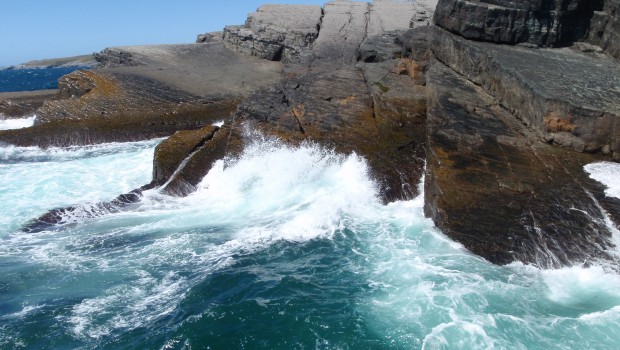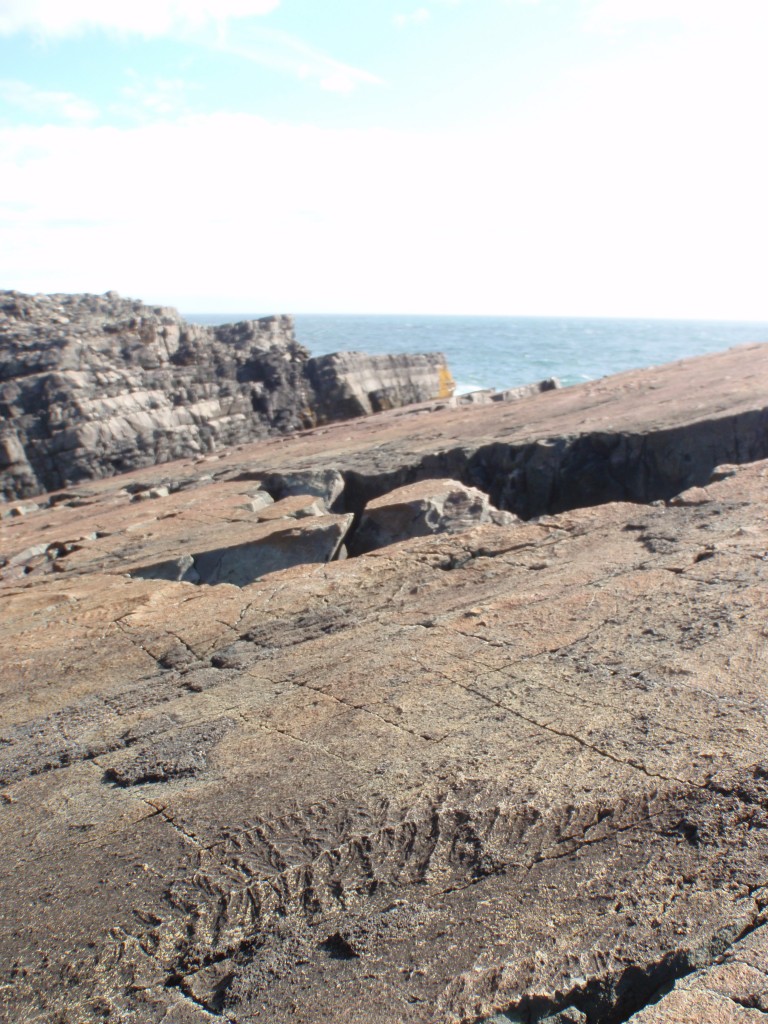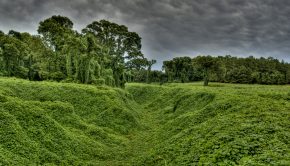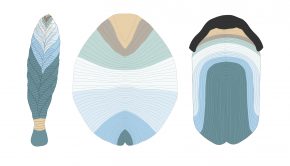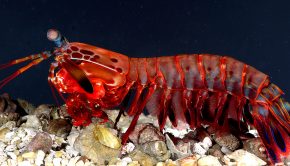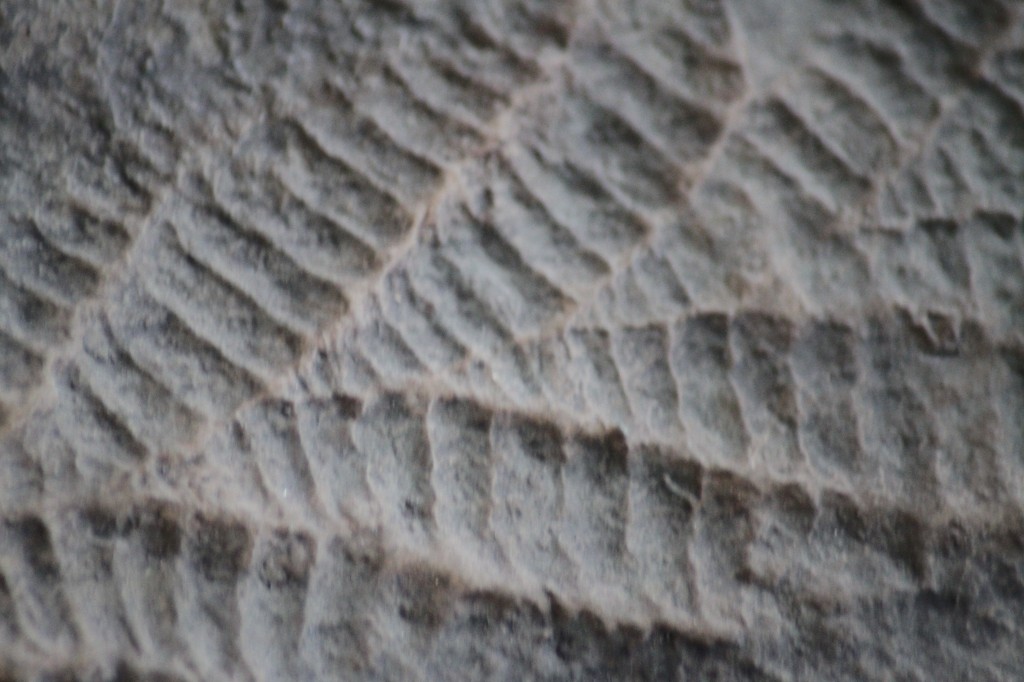Episode 5: Mistaken Point
The biota of the Ediacaran period (635 – 541 ma) is of critical importance to our understanding of the origin of animals because it immediately precedes the Cambrian fauna, from which all subsequent animal life evolved. Localities of this age are justly famous for the exceptional quality of preservation of soft-bodied organisms. One of the best known and most important Ediacaran localities is at Mistaken Point, Newfoundland, Canada. We got to talk to Dr. Alex Liu, a research fellow at the University of Cambridge about Mistaken Point, and the nature of its biota.
Podcast: Download (Duration: 1:00:22 — 82.9MB)

Alex at the trailhead to Mistaken Point, Newfoundland, Canada. Mistaken Point is the south-easternly point of Newfoundland, approximately 140km south of the city of St. John’s.
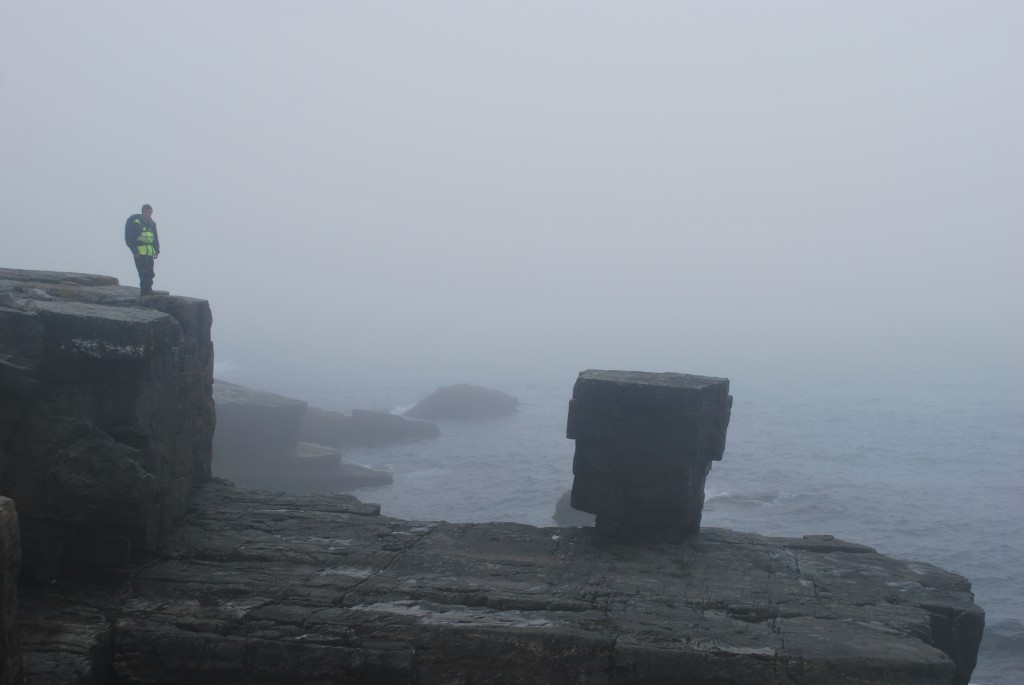
…but the most common weather encountered over the course of the year is fog. Image courtesy of Jack Matthews.

The Cape Race lighthouse. Mistaken Point got its name as a result of maritime accidents, when ships’ captains mistook it for Cape Race, further to the East. This error resulted in several ships turning North towards St John’s too early, and becoming wrecked on the rocks.

Mistaken Point being battered by waves coming from the direction of tropical storms out in the Atlantic Ocean, September 2012.

The large, expansive bedding planes seen in this image each lie beneath a volcanic tuff, which has been weathered away to reveal this record of ancient seafloors. The angle of the rocks and the fact that the tuff is easier to weather than the overlying siltstones results in large areas being exposed for study.

Much of the Mistaken Point succession has been subjected to intense folding and faulting, resulting in features such as this contorted bedding plane.
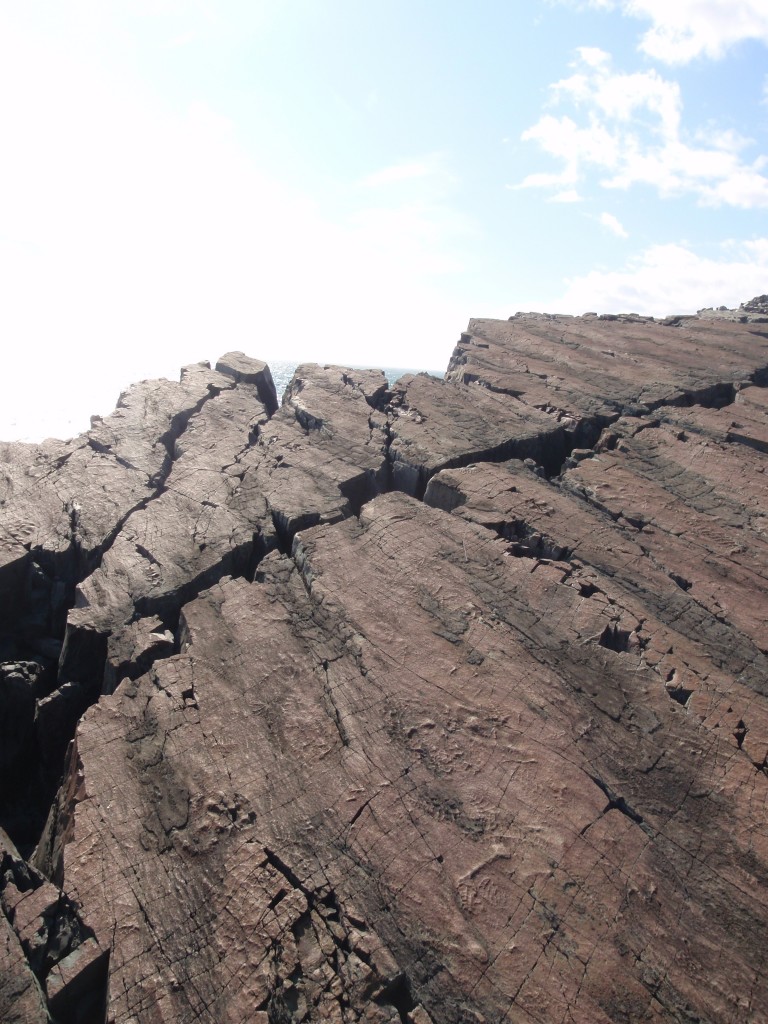
Fossils on the famous ‘E’ surface of Mistaken Point. The fossils are are typically low relief moulds and casts, and as such, are best viewed under low-angle sunlight.

Fractofusus misrai, the most common fossil found on the ‘E’ surface. Fractofusus is a rangeomorph, with its well-preserved rangeomorph branching arranged in bundles either side of a central axis.

A Fractofusus specimen partially covered by a grey tuff. This is a rock made from compacted grains of volcanic ash and is responsible both for smothering and preserving these soft-bodied organisms ~565 million years ago.
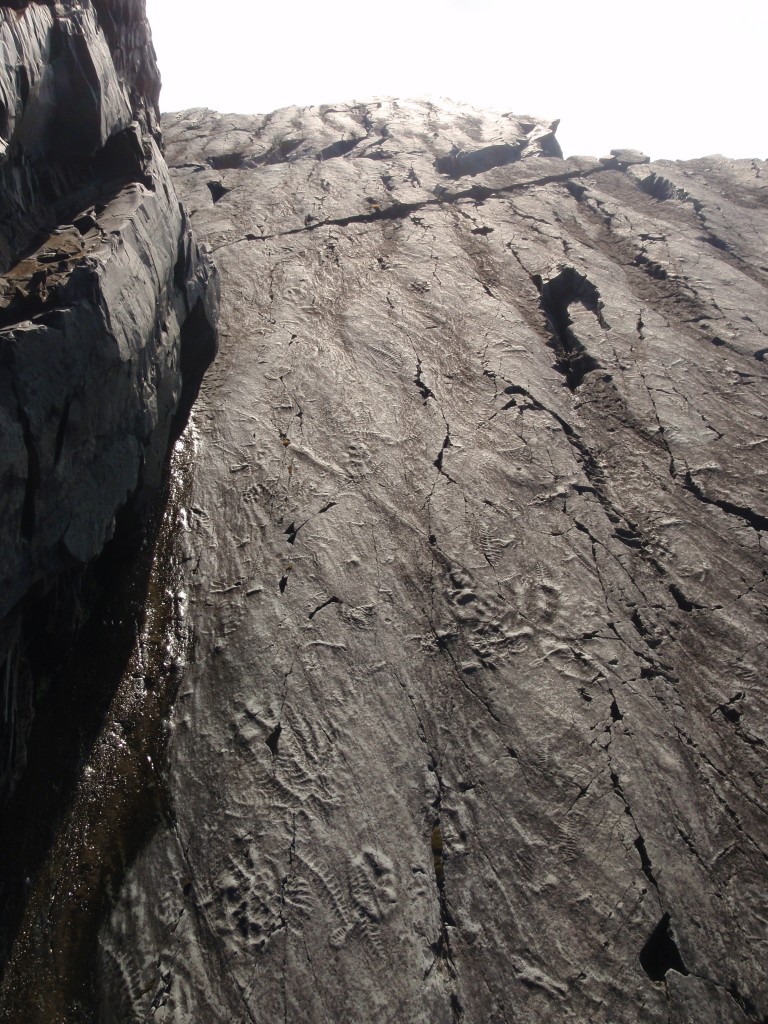
More fossils from the Mistaken Point ‘E’ surface, showing the high density and diversity of this Late Ediacaran fossil assemblage.

A rangeomorph known as Bradgatia, from the ‘D’ surface at Mistaken Point. Bradgatia possesses multiple rangeomorph fronds, which are arranged around a central point, giving the organism the general appearance of a lettuce.

A Bradgatia specimen from Charnwood Forest, Leicestershire, U.K., for comparison to the previous image. The fossil assemblages in Leicestershire and Newfoundland are extremely similar, possessing similar ages and inferred depositional environments. The two regions, now separated by the Atlantic Ocean, were once adjacent to the same micro-continent (called Avalonia) during the Ediacaran Period.

A cast of the holotype Charnia masoni, from Charnwood Forest, England. The original specimen was discovered by schoolchildren in the 1950s, and was crucial in allowing scientists to recognise that large and complex macro-organisms did exist in Precambrian rocks.
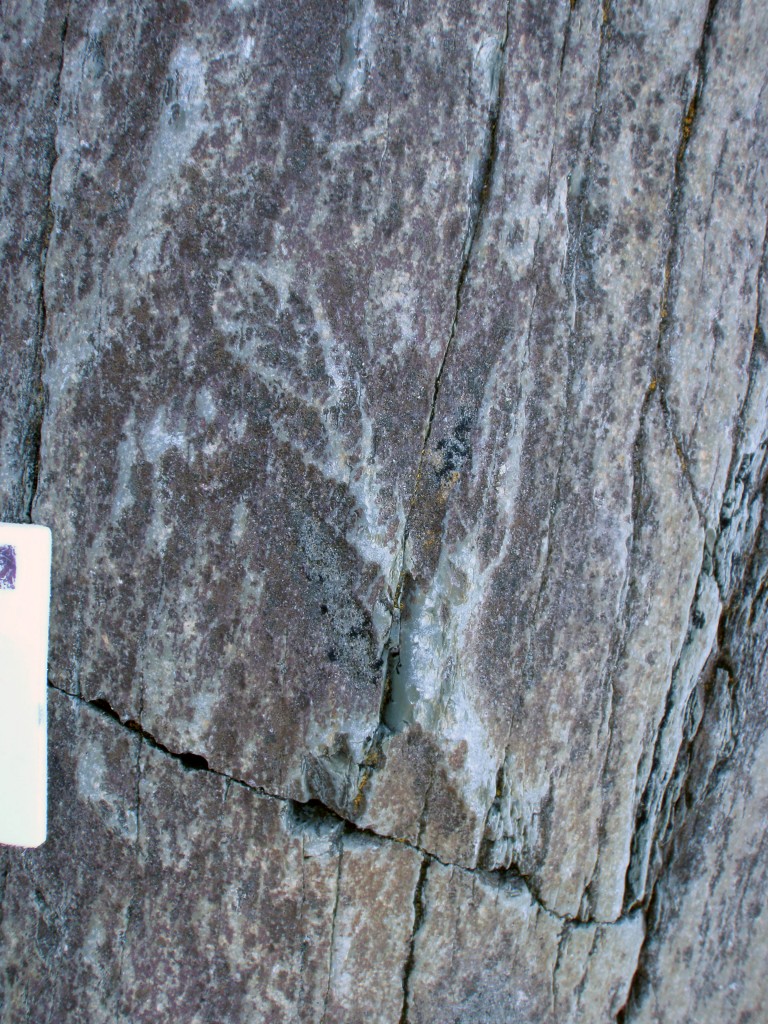
A Charnia specimen from Mistaken Point. Charnia is one of the most recognisable Ediacaran taxa, and is also known from the White Sea region of Russia.
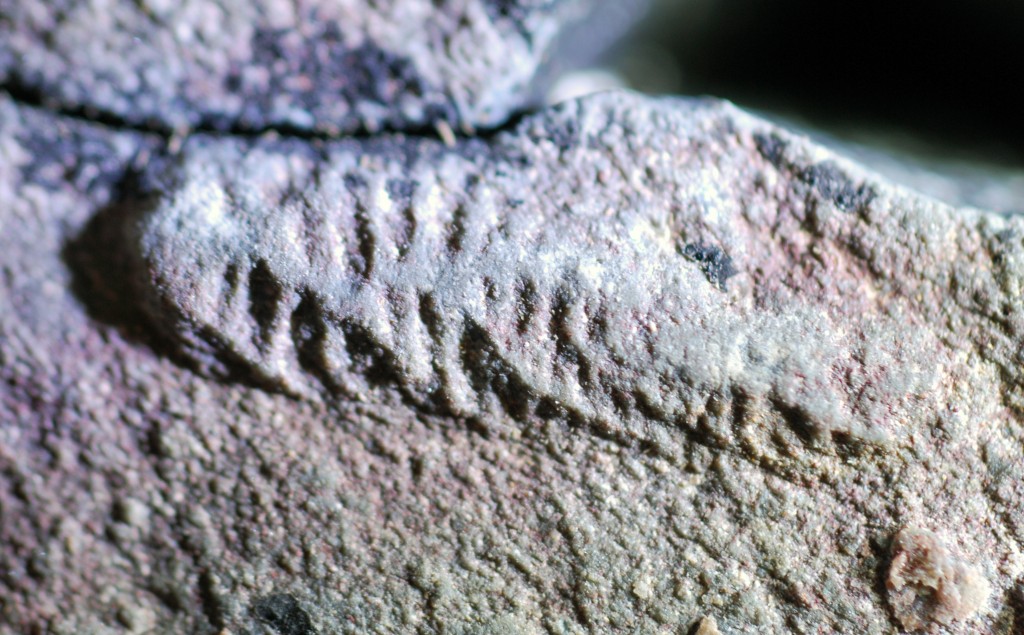
A juvenile specimen of a Charnia-like frond, measuring just 17 mm in length. This specimen is part of an assemblage of juvenile forms on one of the oldest fossil-bearing surfaces within the Mistaken Point area, dated to around 579 million years old. Image courtesy of Jack Matthews.

The youngest fossils in the Newfoundland Ediacaran succession are abundant simple circular discs and pits, referred to as Aspidella terranovica. These are found in the Fermeuse Formation, on the eastern coastline of the Avalon Peninsula.
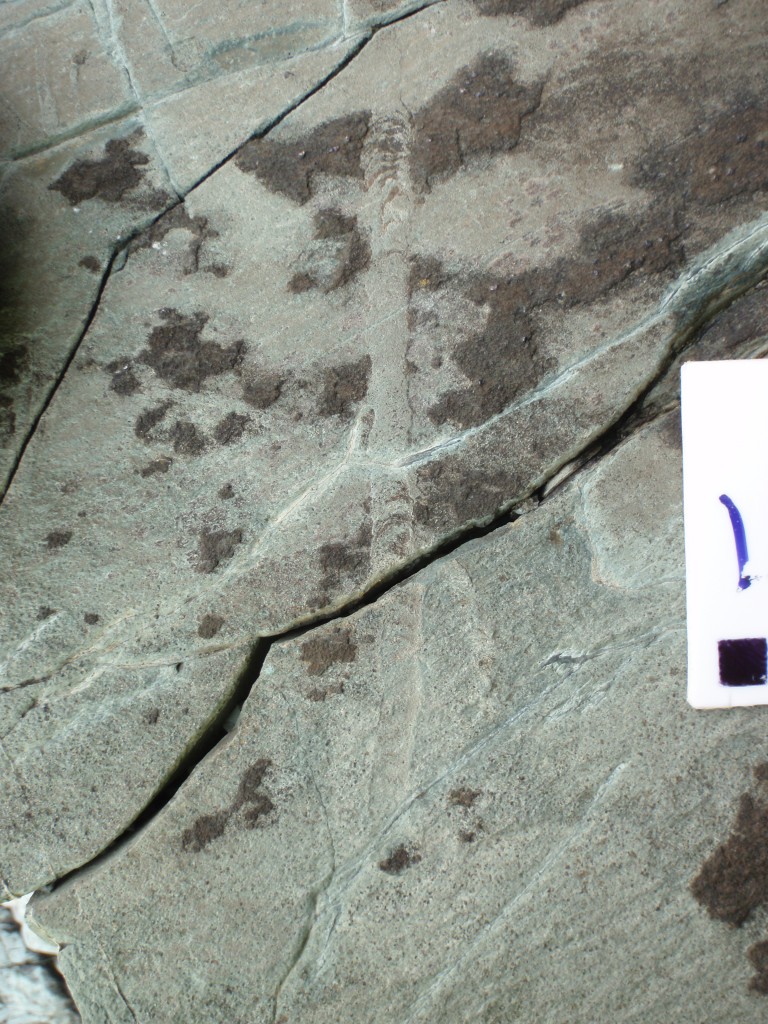
A simple horizontal surface locomotion trace from late Ediacaran rocks at Mistaken Point, formed roughly 565 million years ago. Contrast this simple and rare structure with the abundant evidence for locomotion by animals in rocks of Cambrian age, ~20 million years later (next image).
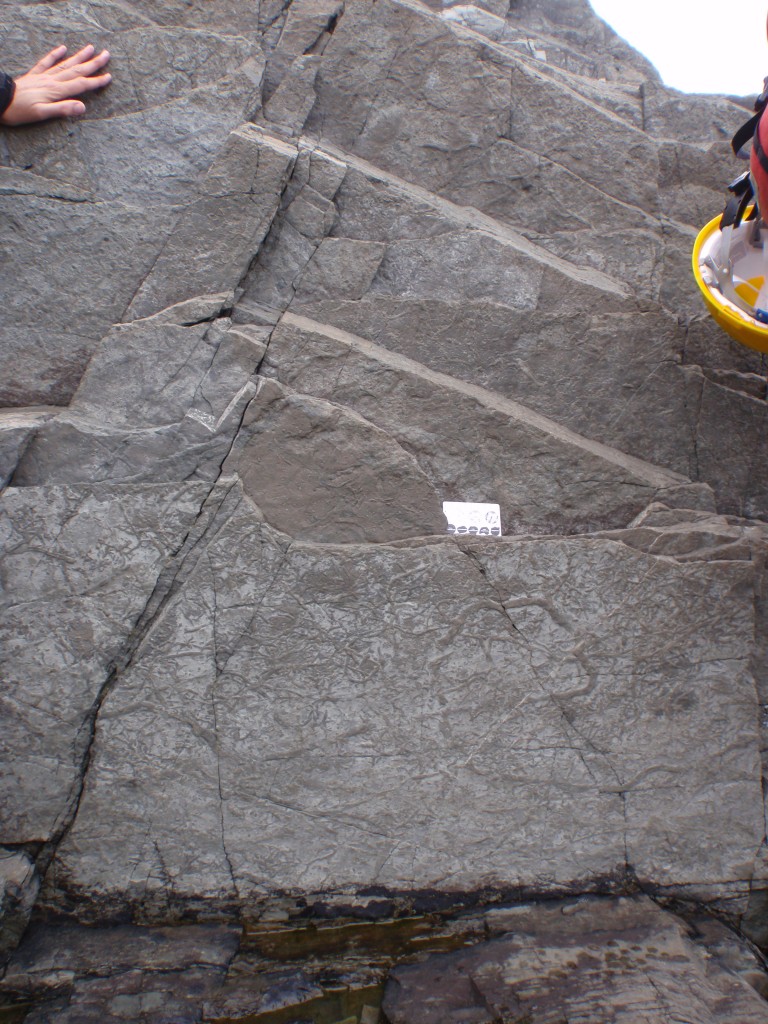
Extensive and pervasive horizontal and vertical burrowing as seen in the Lower Cambrian rocks at Grand Bank, Burin Peninsula, Newfoundland.

A humpback whale off the coast of the Avalon Peninsula. In addition to its vast palaeontological interest, the Mistaken Point Ecological Reserve is also frequented by whales, seals, otters, moose, caribou, and abundant birdlife.
Unless stated, all images are courtesy and copyright of Dr. Liu.

